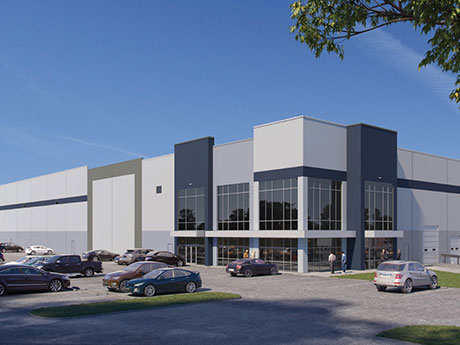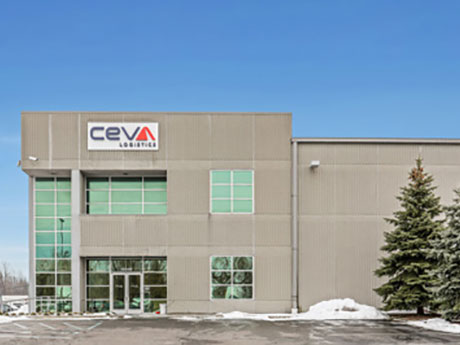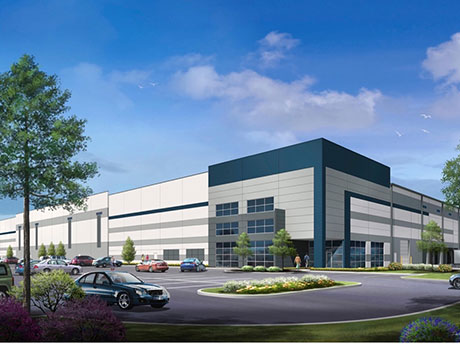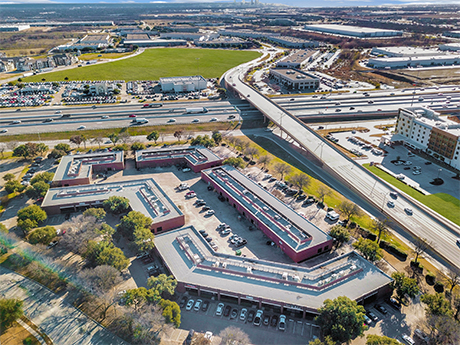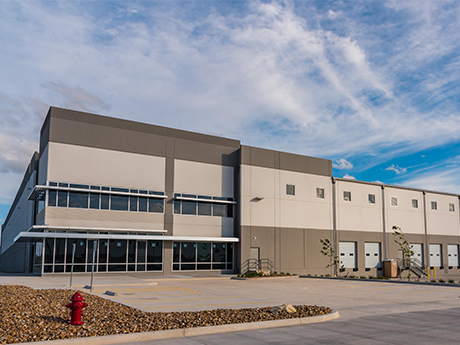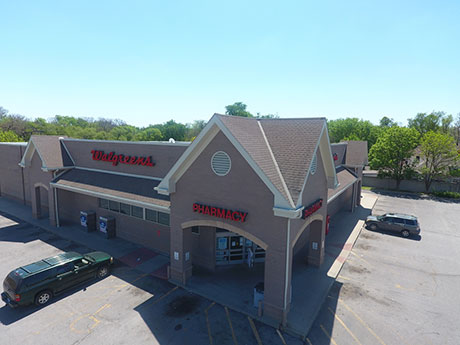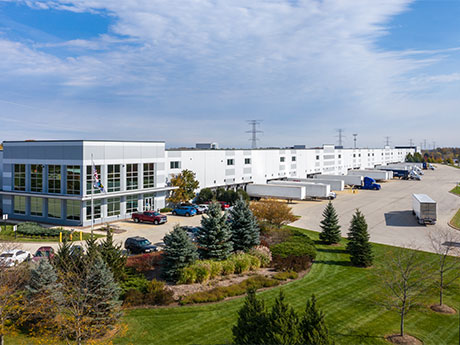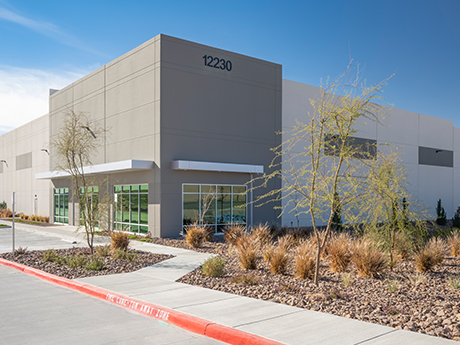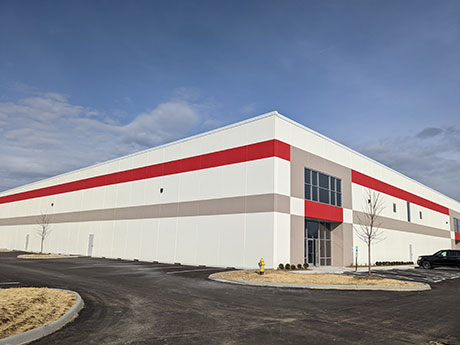By Alec Pacella, NAI Pleasant Valley The Cleveland industrial market enjoyed a strong first half of 2022, characterized by record-low vacancy rates, brisk new construction and increased rental rates and sales prices. Although the market has made several headlines over the first six months, many of these trends began several years ago and the pandemic only accelerated the activity level amongst several key sectors. Market wide, the average vacancy rate was just over 4 percent at the mid-year mark, which is a slight decrease from the 4.5 percent rate at the end of last year. By most accounts, this is a record-low level and represents a decrease of two full percentage points over the last five years. The most popular submarket, the Southeast, which encompasses favored industrial locations such as Solon, Twinsburg, Streetsboro and Aurora, finished the first half with a slightly higher rate of 4.4 percent. However, this market has also seen significant new construction, including a predominance of speculative projects. The submarket with the lowest vacancy rate is the Southwest, which stretches from Middleburg Heights through Medina, checking in at 3.7 percent. At the other end was the downtown submarket. Characterized by a significant amount of older properties, …
Industrial
By Anthony Avendt, Cushman & Wakefield Like most markets in the U.S. and Canada, Detroit’s industrial sector has seen its ups and downs. Detroit’s always been a bit of an outlier though due to extreme volatility. What’s more, we’ve (hopefully) learned lessons from past downturns that well position the city and its commercial real estate regardless of continued strong demand and rent growth or any bumps in the road we may encounter. Detroit is a little different from similar-sized markets in the region. First, while it’s certainly part of the U.S. heartland, the city’s geographic position on a peninsula means it’s poorly suited for broad distribution to large swaths of the country. Second, of course, is the auto industry’s impact. The auto industry is widely dispersed across the U.S. now, but Detroit and Michigan remain its heart and brain. As the sector pivots to autonomous and electric vehicles, that is going to drive demand for industrial space. Ford already has announced an investment of $40 to $50 billion over the next decade-plus, including redevelopment of Michigan Central Station as anchor of its Mobility Innovation District. Stellantis, the parent of Chrysler, Jeep and Dodge, has announced its own $35.5 billion investment …
By Mark Volkman and Brian Leonard, JLL It’s no secret the industrial market has seen a monumental surge throughout the nation as a result of changing consumer behaviors. How developers in each city are combatting the demand, though, is a different story. The success of the industrial market in Cincinnati, in particular, stems from its affordable cost of living, strong labor pool and impressive accessibility. With the city being only an eight-hour drive away from half of the country, it’s become a viable option for tenants with a large footprint that want a lower-cost facility compared with the price of those in major cities like Chicago, New York City or San Francisco. Like other cities throughout the U.S., Cincinnati’s successes have come with both challenges and a variety of emerging trends. Learn about some of the most prominent ones below. 1. The emergence of the Cincinnati-Dayton metroplex With the heightened demand for industrial space comes the need for developers to find land not only in the city, but in its suburbs, as well. Dayton, a city about one hour north of Cincinnati via Interstate 75, has surfaced as a strong option for developers. Proctor & Gamble’s 1.8 million-square-foot distribution center, …
By Jason Baxter, president and CEO, Fort Capital While some might think that industrial warehouses are overflowing with e-commerce tenants, in Fort Worth, we have seen another tenant mix grow at an even more rapid pace: service providers. These are the plumbers, landscapers and electricians that work behind the scenes to keep cities running. With population growth skyrocketing in Fort Worth, the industrial space needed by these service providers is also growing at a rapid rate. According to the U.S. Census Bureau’s latest population estimates, Fort Worth’s population increase was the third-largest in the country between 2019 and 2020, a period during which the city added more than 19,000 new residents. This increase allowed Fort Worth to jump from No. 13 to No. 12 in terms of the largest U.S. cities based on population. We often forget that population growth at this scale impacts all facets of real estate — housing, office, entertainment, industrial. Each of these uses requires various types of service providers to maintain. Fort Worth and similar fast-growing markets do not have enough space to support this growing segment of the tenant base in addition to the e-commerce and logistics users that have become the face of …
By Paige Suvalsky, field research manager — Central Texas, CBRE; Rob Burlingame, senior vice president — Central Texas, CBRE; and Miller Hamrick, Texas industrial & logistics research lead, CBRE CBRE Research recently profiled Austin and San Antonio as an “emerging” industrial market along the Interstate 35 corridor in Central Texas. This region makes up much of the western portion of the “Texas Triangle”, a mega-region on a global scale that had an economic output of $1.5 trillion in 2021 and a population of just over 20 million people. The Texas Triangle represents a top 25 global economy, just ahead of Spain. The northern apex of the Texas Triangle, Dallas-Fort Worth (DFW), is projected to surpass Chicago by 2034-2035 to become the third-most populous urban region in the United States with a population of 9.4 million. This massive boom in population and business is driving the current rush to Central Texas and pushing regional and national developers to stake their claims in this growing market. Currently, about 5.5 million people live between the stretch of Texas from Laredo to Georgetown, and this area’s population is expected to grow by 10.8 percent over the next five years. According to data from the …
Wichita experienced considerable retail and restaurant expansion throughout 2021, with other new stores planned for 2022. The two biggest new players to Wichita include Top Golf at 29th Street and Greenwich Road, now under construction, and Scheel’s entering the market with a new 220,000-square-foot store to be located in the former Sears space at Towne East Square. Top Golf is anticipated to open in late 2022, spurring more retail activity on North Greenwich. Furniture stores have been actively backfilling big boxes, including Bob Mills who took the former Michael’s, and Wichita Furniture, a strong regional player, taking the former 100,000-square-foot Kmart building on West Kellogg/US-54. Discount stores have continued to find a way to open more locations to increase their footprints in the market, both new construction and conversion of former retail spaces. Ollie’s Bargain Outlet opened its west store at Central and Ridge roads, and is also opening a store at Brittany Center. Quick-service restaurants (QSRs) have been active, including two new locations opening in 2022 for Dunkin’ and several new Dutch Bros Coffee locations as they enter the market as well in late 2022 and 2023. Tropical Smoothie Café opened a location last year and Smoothie King …
Like much of the country, the Milwaukee industrial market flourished over the last 12 to 24 months and has continued to shatter records across the board. Tenant demand far exceeded supply, driving vacancy rates down and rental rates up. Pent-up capital chased deals at record numbers, compressing cap rates further in this sector. And new construction continued its speedy pace, with over 8 million square feet on schedule to be delivered in 2022. But with inflation surpassing 8 percent and interest rates on the rise, the question now is how long will we continue this record-setting pace? Just-in-time to just-in-case As supply chain constraints emerged during the pandemic, businesses switched from the widely used just-in-time model to just-in-case, meaning drastic increases in inventory storage and logistic needs for many companies. Tenants scrambled to lease additional space to house what inventory they could get in stock. At the start of 2021, Class A industrial vacancy in Milwaukee was 9.68 percent. By the end of the year, that number had been slashed in half to just 4.39 percent as the flight to quality industrial product exceeded deliveries. In the fourth quarter of 2021, 1.65 million square feet of new industrial space …
By Josh Meredith, director of development, VanTrust Real Estate Sharing a 2,000-mile border, Mexico and the United States trade over $500 billion worth of goods and services each year, representing our country’s second-largest trade partnership. Impressively, over 20 percent of this exchange travels through the El Paso, Texas, port of entry, according to the Texas Comptroller of Public Accounts. This movement has deemed the El Paso/Ciudad Juarez (Mexico) region as one of the most important industrial centers in North America for years. Although the El Paso/Juarez market has a history of extensive commercial activity, with more than 1,100 manufacturing operations alone, the region has remained under the radar, experiencing traditional, steady industrial growth for the past decade. However, with undeniable strategic advantages and 300-plus Fortune 1000 companies in the El Paso/Juarez region, the past couple of years have attracted an increasing number of developers looking to capitalize on the market’s industrial and distribution needs. Now, with record net absorption and a remarkably low vacancy rate, the “borderplex” is the market to watch, building a reputation as not only a competitive industrial center, but also as a driver of some of the most important global manufacturing trends. Competitive Edge With more …
By Taylor Williams Industrial brokers and developers throughout New Jersey and Eastern Pennsylvania are flush with tenant demand, but the frenetic pace and frequency at which revenues and costs change in this market has introduced a whole new set of operating challenges. In terms of the supply side of the market, developers of industrial product, like those of every other property type, have been squeezed by supply chain disruption. Prices and lead times for ordering key materials change radically and often without warning. Developers who try to circumvent these obstacles by ordering way earlier than normal in the process now run an increased risk of having to take delivery of supplies without having all permits and sources of construction financing in place. Such a misfire in timing can create lags in delivery, potentially alienating tenants needing turnkey space and generating additional short-term costs via storage of the materials before construction begins. In addition, misaligning these timelines can spook potential investors that want the certainty of knowing that a project is moving forward. “We’re buying supplies a year in advance and trying to sync up deliveries of those materials with when we expect to have full project approval,” says Peter Polt, …
With low vacancy, positive absorption and robust leasing and investment activity, the Columbus industrial sector is positioned to experience a substantial amount of demand to continue throughout 2022 after a record-breaking year in 2021. Last year set the tone for historic construction and absorption and the market is poised to continue its strong momentum. It is easy to look at the map and see why Columbus is such a great logistics hub given its prime location within a 10-hour drive within 47 percent of the U.S. population, fairly flat topography and direct access to major freeways. There is one big piece of the pie that doesn’t always get noticed, which is the economic development powers that are putting Columbus on the map. Jobs Ohio and OneColumbus have done an incredible job attracting businesses to the state of Ohio. The biggest investment in the history of Ohio was announced this January when Intel revealed plans on building a new chip factory in New Albany. This $20 billion investment really put all eyes on the Northeast part of Columbus. As it gets tougher to get entitlements and zoning in other industrial submarkets, New Albany seems to be carrying a significant amount …


